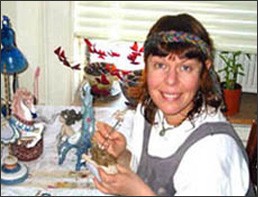Broken ceramics, whether it be a pot or a plate can be restored depending on the severity of damage. In most cases broken ceramics usually start off with a minor crack due to overheating, humidity or a minor fall, and gradually progress to bigger cracks that are easily visible to the naked eye. However, some of the times damage is caused by a house pet knocking over your favorite vase or plate, or a shelf collapsing.
Repairing Broken Ceramic
Repair of ceramics is usually a straightforward process that involves mending the pieces with glue and bonding materials back together again. Many undertake this project themselves and others prefer hiring a professional expert to fix their broken ceramic pieces. Please keep in mind that in order to properly glue the pieces, very often “stretching” or expanding of the broken pieces is involved, which only a professional restorer can do. If you choose to go ahead and glue the pieces yourself, be prepared to pay more if you decide to have a professional restore your damaged item invisibly. He or she would need to “unglue” your pieces first, which is a job in itself, and then start the restoration from scratch.
One of the steps involved in the repair of ceramics would be selecting the correct adhesive. Clear, slow-drying epoxy works the best in mending ceramics. Before deciding on which glue to use the type of ceramic you will be working with should be identified first.
Process for Broken Ceramic
Ensuring that the pieces have been cleaned is vital in ceramic restoration. If the item has been fixed before then the old adhesive should be removed in order to ensure that the new one will bond together well. Pieces can be cleaned with a mild detergent and warm water.
Using a small brush the chosen adhesive should be applied to the raw and exposed edges. Just enough glue should be spread on as too much will not allow the pieces to bond properly and too little may cause a weak repair job. Hold the pieces together, applying some pressure to help them set. Modeling clay may be used to place the item on, in order to hold it in place as it dries. If an item has been broken into many pieces, it’s imperative to follow the sequence in repairing each piece by piece. Each combined piece should be cured completely before adding on another.
Sometimes in a repair job the fillers or glue can be seen. If this is not the look you wish to have then you can always touch up the color or design of the item. Blending in to cover the glue seams.
Décor touch ups are also advised when trying to restore a ceramic piece. Oil-based and hard drying paints are most suitable for such a job. Once the design has been re-touched the object should be set out to dry for at least a week.
Ceramic restoration is a great project for DIY enthusiasts. Setting out to complete such a task is quite time-consuming and laborious. However with the option of expert restoration and repair services on offer, many prefer handing over this task to them. There are a multitude of ceramic restoration companies to be found in today’s market. A simple online search will be able to guide you in finding the best one to suit your repair needs. The costing of repairing damaged ceramics will depend on the type and extent of damage. Most repair jobs are quite affordable and as so many of these pieces have such great sentimental and financial value to them people won’t mind having them restored to their former beauty.


Speak Your Mind